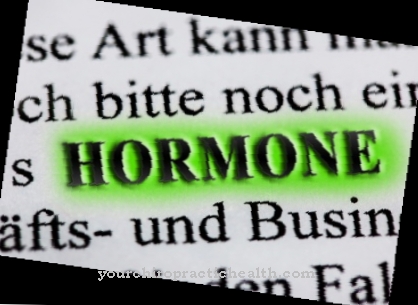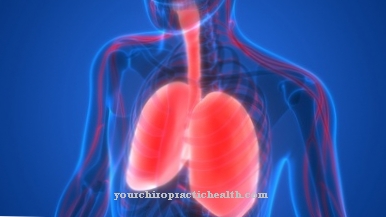The Respiratory rate describes the number of breaths taken by a living being within a certain time. It is usually measured and reported for a period of one minute. An adult human takes around twelve to 18 breaths in a minute. The correct breathing rate is crucial for optimal oxygen saturation of the blood.
What is respiratory rate?

The respiratory rate indicates how many breaths are taken in a specified time unit. Usually the breathing rate is given in breaths per minute. The respiratory rate is one of the vital parameters. Monitoring is particularly important in intensive care medicine in hospitals.
The breathing rate in rest phases, like the heart rate, differs from person to person and depends on various physical and psychological factors. However, there are normal values within which the breathing rates move. Which breathing rate is considered normal depends on the age of the person concerned: infants breathe about 30-40 times per minute, children about 15-25 times, and adults about 12-18 times.
Function & task
A person's breathing rate can increase or calm down depending on the situation. During sleep, for example, a breathing rate that is slightly below normal is also considered sufficient. Adjusting the breathing rate is necessary, for example, to allow more oxygen to get into the blood during phases of physical exertion.
The breathing rate is usually controlled subconsciously in the brain. To a certain extent, however, the breathing rate can also be influenced at will. In addition to the respiratory rate, the depth of breath is also important for a person's condition. Shallow breathing can result in insufficient oxygen saturation despite the normal frequency. As a rule, however, breathing rate and breathing depth are closely related and a disruption of one parameter would also affect the other.
The respiratory rate is crucial for regulating the oxygen content in the blood and its equilibrium with the carbon dioxide saturation. The body's need for oxygen increases with physical exertion. In this case, an increased breathing rate is actually healthy, because this is the only way to meet the increased demand for oxygen and exhaled carbon dioxide.
The body automatically adjusts the breathing rate even if the air pressure is reduced, for example when hiking at high altitude. The frequency increases because less oxygen can be absorbed by the body due to low air pressure.
The intake of sufficient oxygen through the breath is crucial for the supply of the organs in the body. In particular, vital organs such as the brain are dependent on a continuous supply of oxygen and can be severely damaged after just a few minutes of undersupply.
You can find your medication here
➔ Medicines for shortness of breath and lung problemsIllnesses & ailments
Changes in respiratory rate can have serious effects on the oxygen supply to the body. For this reason, the respiratory rate and the associated oxygen saturation of the blood must be closely monitored in intensive care medicine. Checking the oxygen saturation is particularly necessary when the patient is artificially ventilated.
If the breathing rate is too high, it is called tachypnea. Tachypnea is spoken of in adults when the respiratory rate is over 20. Hyperventilation is closely related to tachypnea. Often both occur together. During hyperventilation, too much carbon dioxide is exhaled, which reduces the concentration of the substance in the blood.
If the breathing rate is extremely high, it can happen that the so-called dead space of the breathing system is primarily ventilated. However, this is not involved in gas exchange between the lungs and the blood. As a result, the oxygen concentration in the blood drops. The condition of insufficient oxygen saturation is called hypoxia. If the hypoxia lasts too long, it can lead to considerable tissue damage.
Another phenomenon that often occurs with tachypnea is dyspnea. This is the subjective feeling of shortness of breath. This feeling is caused by a lack of oxygen that occurs despite a functioning breathing apparatus.
On the other hand, if the breathing rate is too low, it is called bradypnea. This describes a condition in which an adult person takes less than 10 breaths per minute. A very low respiratory rate causes problems similar to those of an excessively high rate: the blood can no longer be adequately enriched with oxygen. As a result, the carbon dioxide level rises because the CO2 can no longer be sufficiently exhaled. If the CO2 content in the blood is significantly increased, this can lead to unconsciousness.
The increase in bradypnea is apnea. This signifies the complete cessation of breathing. In this state, too, there is a considerable lack of oxygen in the body. Since even the vital organs, including the brain, can no longer be supplied with oxygen, death can occur after just three to five minutes of breathing stop.
One form of apnea is sleep apnea. Patients with this syndrome experience pauses in breathing lasting several seconds during sleep. However, since the body releases adrenaline when the brain is not supplied with oxygen as a result, the patient gasps for breath audibly after the paused breath. However, this does not wake him up. The consequences of apnea can be increased sleepiness during the day or cardiac arrhythmias.



























